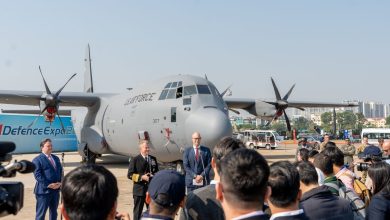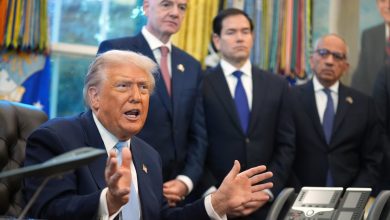Coast Guard to get first MQ-9 drones
The Coast Guard is getting its first MQ-9 drones to help counter human trafficking, assist with drug interdictions and improve search-and-rescue missions, an addition that current and former officials are heralding as a game-changer in the fight against smuggling.
Known for their long flight times needed for extensive surveillance missions, the MQ-9 is among the most sought-after drones for combatant commanders across the globe.
About $266 million of the nearly $25 billion that the Coast Guard received in the “One Big Beautiful Bill Act” signed into law in July will be used to procure the service’s own MQ-9 Alpha long-range unmanned aerial systems, Lieutenant Commander Steve Roth said.
Per U.S. Air Force data, an MQ-9 costs about $57 million, and the acquisition could increase the Coast Guard’s inventory from zero to as many as four of these units. Officials say the drones will not be armed.
Each drone can collect intelligence information for about 24 hours in a 60- to 80-mile radius of detection.
“That’s ions of improvement on the way we’ve been doing it with manned aviation,” Lt. Commander Andrew Denning, the long-range drone program manager for the Coast Guard, told Military Times.
Coast Guard C-130 Super Hercules planes can patrol for about 14 hours, while Navy P-8 Poseidon aircraft can patrol for up to 10 hours at a time. The small crews on these manned aircraft work throughout the patrol, while MQ-9s rotate crews about every two hours.
“You have a fresh set of eyes, so you can really mitigate risk by doing that. By keeping the crew fresh, you can keep it out there, so you don’t have as many pass downs going from aircraft to aircraft. It’s pretty seamless,” Lieutenant Commander Ryan Major told Military Times.
The Coast Guard has partnered with U.S. Customs and Border Protection since the mid-2000’s to fly the CBP’s MQ-9 Alpha drones to execute mostly customs missions out of San Angelo, Texas. Major said the CBP missions the service has pursued have been successful.
“Right now, the southern border is almost closed up. We’re not seeing, we’re hardly seeing anybody trying to cross the southern border, so we’re moving operations out to the Gulf of America,” he said.
With the money from the Big Beautiful Bill, Denning said the Coast Guard will still partner with CBP but will now be able to launch its own program with its own equipment, extending its intelligence, surveillance and reconnaissance (ISR) reach.
“We’re hoping to take it out of San Angelo, where we work with CBP, to West Coast and East coast locations where we can start to use them on our own, prosecute them and push them out into our own mission set,” Denning said.
The pilots said more drones could lead to more rescue successes. In November 2023, CBP and Coast Guard MQ-9 pilots at the Joint Program Office in San Angelo, Texas, were able to use one of the CBP’s drones to find a lost vessel with four people on board following an unsuccessful search by Coast Guard helicopters and vessels in the Corpus Christi, Texas, area.
“So I think it was a great case study that we can use these [drones] for search and rescue going forward,” Major said.
Retired Navy Rear Admiral Mark Montgomery of the Foundation for Defense of Democracies told Military Times the influx of resources in the Big Beautiful Bill shows the administration’s intense focus on homeland defense. The Coast Guard’s use of unmanned long-range surveillance, he added, will save money without impacting the Pentagon’s ISR platform stockpiles.
RELATED
The resources are critical to the Coast Guard’s Force Design 2028, which Acting Vice Commandant of the Coast Guard Vice Adm. Thomas Allan, Jr. described as a “once in a generation effort” to transform the service into a more agile, capable and response force. Speaking at a ceremony in Washington last week, Allan added that the Coast Guard was “significantly increasing” the use of unmanned aerial systems “as a key force multiplier.”
One way the service is enabling increased drone use is by expanding the UAS pilot pool to a broader range of qualified Coasties.
The Coast Guard had a policy in place in which it sent only designated naval aviators to the UAS mission, but it shifted to include pilots who have a commercial Federal Aviation Administration certificate and 1,000 hours of flight experience on any combination of manned aircraft.
During the Washington ceremony, Allan pinned the service’s new aviation pilot vehicle wings onto Major, the first Coastie to fly drones without previously being a naval aviator for the service.
“I’ve been in aviation my entire life,” said Major, who was a commercial flight instructor in 2001 and served as a helicopter mechanic in the Coast Guard before earning his UAS wings.
“My dream was always to fly, especially fly for the Coast Guard. I always wanted to do search and rescue. I always wanted to be a Coast Guard aviator,” he said.
Read the full article here









